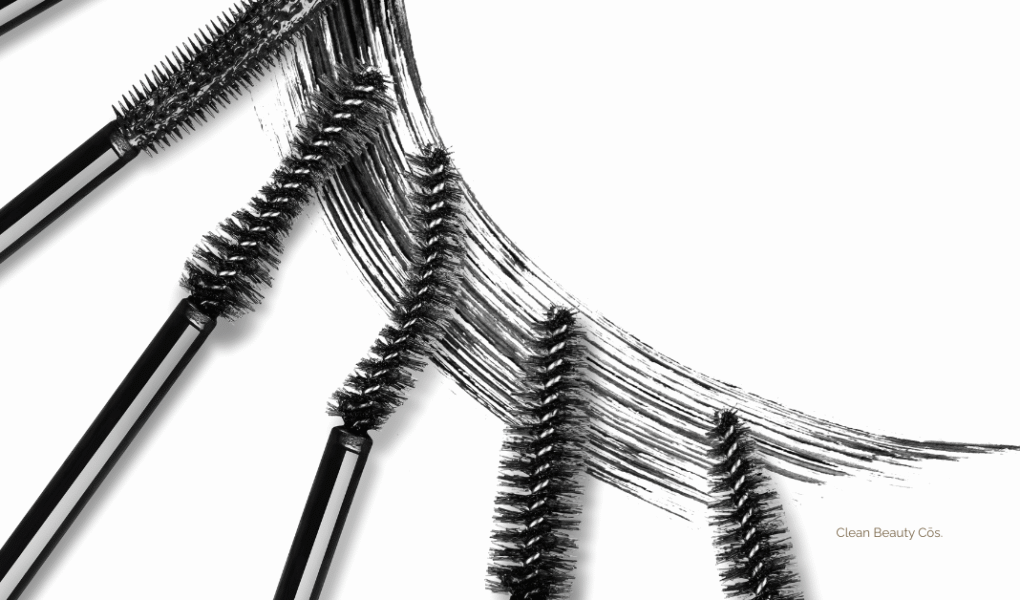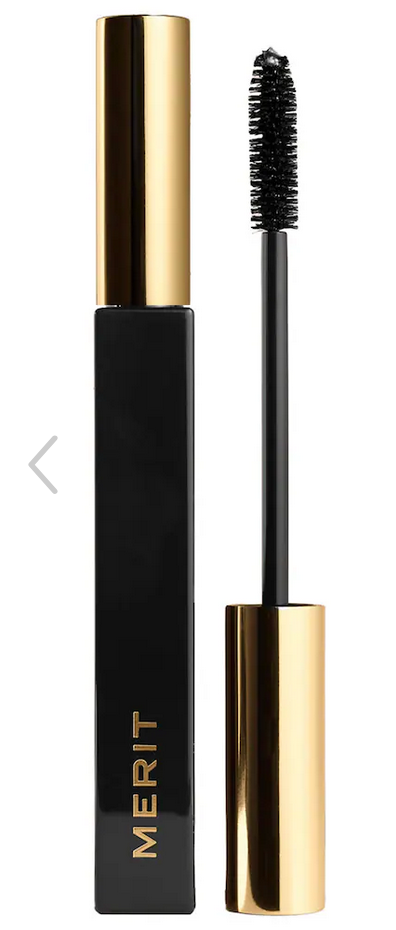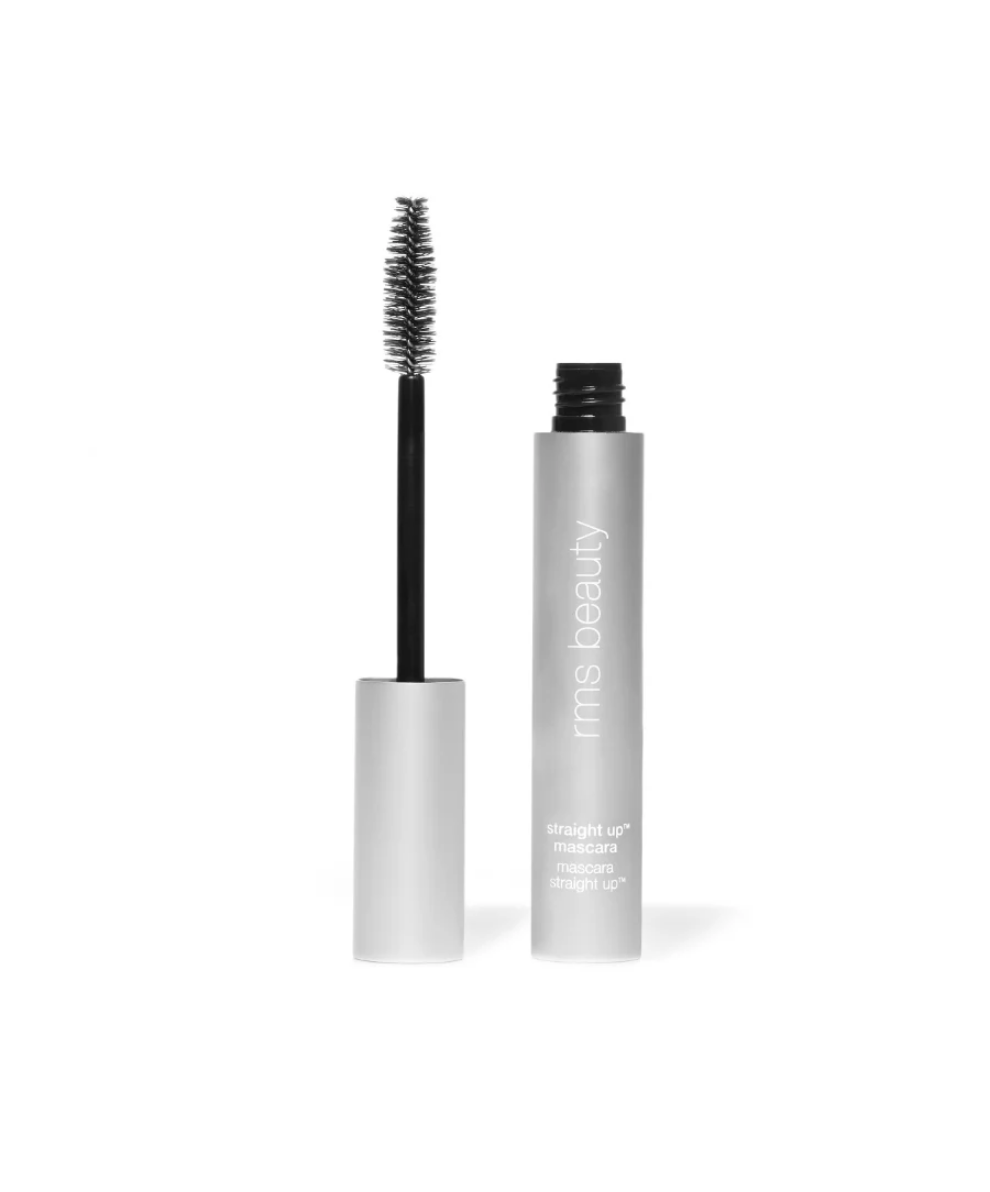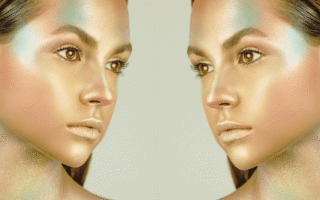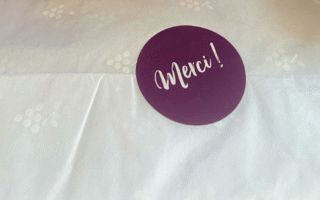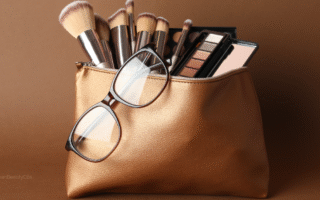At the moment, all tubing mascaras rely on synthetic polymers
(acrylates, polyvinyls, polyamides, etc.) to form the flexible “tubes” around lashes.
That’s the entire mechanism behind the tubing effect: a plastic-like film former that resists oil,
tears, and smudging, then dissolves or slides off with warm water. Keep in mind, clean beauty isn’t about avoiding synthetic ingredients—it’s about being informed and understanding what you’re putting on your skin.
For those who appreciate the performance benefits of tubing technology but still want a brand recognized for clean beauty standards, Merit Tubing Mascara is featured as “clean at Sephora” and offers a thoughtful balance of smudge-proof wear and lash-conditioning ingredients.
Merit Tubing Mascara, featured as “clean at Sephora.” The tubing mechanism seems to rely on synthetic polymers (Acrylates/Ethylhexyl Acrylate Copolymer, Acrylates Copolymer, PVP), while rice bran wax, fatty acids, and olive oil esters help nourish, condition, and add structure to lashes. For many, the gentle, smudge-proof wear may outweigh the polymer considerations, making it a standout option for those exploring tubing mascaras.
RMS vs e.l.f. Tubing Mascara: Key Ingredient & Performance Differences
As a beauty editor, I’ll admit: tubing mascaras aren’t for everyone. As mentioned, they rely on synthetic polymers—flexible film-formers that wrap around each lash. While they’re marketed as sliding off easily with just warm water, with some of the brands I’ve tested, removal can occasionally require a bit of effort and/or repeated rinsing, which may not be ideal for sensitive eyes or fragile lashes.
Tubing mascaras are considered safe and non-irritating overall, but for some users, the combination of polymers and removal can leave eyes feeling dry or lashes more prone to breakage. This perhaps puts tubing mascaras in a gray zone: effective and innovative, yes, but not for everyone.
It seems the first tubing mascara was introduced by Blinc in the late 1990s. They coined the trademarked term TUBING™ to describe their tiny polymer tubes that wrap around each lash, providing smudge-proof wear and easy removal with warm water. While Blinc holds the brand name, other companies later adopted similar “tube-forming” mascaras under generic names like “tubing mascara,” since there doesn’t appear to be a patent on the actual formula. Today, tubing mascaras are a staple in beauty aisles, but Blinc is still recognized as the trailblazer that introduced this clever concept.
For readers who aren’t keen on tubing technology—or who prefer a more classic mascara experience—comparing to a popular option like e.l.f.’s tubing formula provides a helpful reference. If you enjoy clean beauty formulations but want a traditional approach, RMS Straight Up Volumizing Peptide Mascara (Editor’s Pick) is a standout choice.
RMS mascara performs very well for those who favor clean formulas and a large, fluffy brush. Its biggest wins are the ingredient integrity, the rich black pigment, and the ability to build volume without going overboard—if applied carefully.
Key Ingredient Differences: RMS ‘Clean’ Mascara vs. e.l.f. Tubing Mascara
Both mascaras aim to enhance length, volume, and definition, but their formulas and technologies are very different. e.l.f. Tubing Mascara forms flexible “tubes” around lashes for smudge-proof wear and easy removal with warm water. RMS Beauty Mascara uses a traditional plant-based wax-and-oil formula, focusing on conditioning, natural ingredients, and lash health rather than tubing performance.
| Category | RMS ‘Clean’ Mascara | e.l.f. Tubing Mascara | Key Difference & Why It Matters |
|---|---|---|---|
| Base | Water (primary solvent) | Water (primary solvent) | Both are water-based, but only e.l.f. uses tubing polymers for smudge-proof removal. |
| Waxes (Structure & Hold) | Candelilla wax*, carnauba wax* | Synthetic beeswax, carnauba wax | RMS uses plant-based, organic waxes for smooth, natural wear; e.l.f. blends synthetic wax for firmer tubing and longer hold. |
| Conditioning Oils | Shea butter*, castor seed oil (via butters), plant emollients | Castor seed oil, PEG-8 caprylic/capric glycerides, PEG-40 hydrogenated castor oil | RMS provides long-lasting hydration and peptides for lash health; e.l.f. includes synthetic emulsifiers for tubing performance but less conditioning. |
| Film-Formers/Polymers | Polyglyceryl esters, peptides (Oligopeptide-2) | Styrene/acrylates copolymer, PVP, nylon-12, polyamide-5 | e.l.f. relies on synthetic polymers to create tubing and prevent flaking; RMS avoids acrylates, using peptides for lash support but no tubing effect. |
| Humectants | Glycerin, non-GMO corn starch | Propylene glycol, butylene glycol, fatty acids | RMS is lightweight and soothing; e.l.f. relies on humectants that may irritate sensitive eyes in some users. |
| Preservation | Radish root ferment, glyceryl caprylate, phenethyl alcohol | Phenoxyethanol, ethylhexylglycerin, sodium benzoate | RMS uses gentle, ECOCERT-approved preservatives; e.l.f. uses standard synthetics, safe at low levels but may sensitize some users. |
| Extras | White tea extract, portulaca extract, peptides | Clays, silica, vitamin E | RMS adds antioxidants and lash-conditioning botanicals; e.l.f. focuses on powders and clays to aid tubing performance and matte finish. |
| Pigments | Iron oxides (mineral pigment) | Iron oxides, may contain Black 2 (nano pigment) | Both provide deep black; e.l.f. uses nano pigment for smoother blend, which some clean beauty users avoid. |
*Certified organic in RMS.
Bottom line: RMS ($30) is ideal for clean beauty enthusiasts who want nourishing, plant-based mascara with peptides and botanicals. e.l.f. ($8–10) delivers tubing technology for bold, smudge-proof lashes at an affordable price, but includes more synthetics and PEGs, with less focus on conditioning.
Ingredient Detail Worth Noticing ✨
RMS Straight Up Volumizing Mascara swaps out conventional corn starch for non-GMO corn starch—a small but meaningful choice.
Why does it matter? Most GMO corn is grown to withstand heavy spraying of glyphosate (the herbicide in Roundup). That can mean higher risk of trace pesticide residues in the supply chain. By choosing non-GMO, RMS reduces this concern and signals a cleaner, more mindful sourcing decision.
